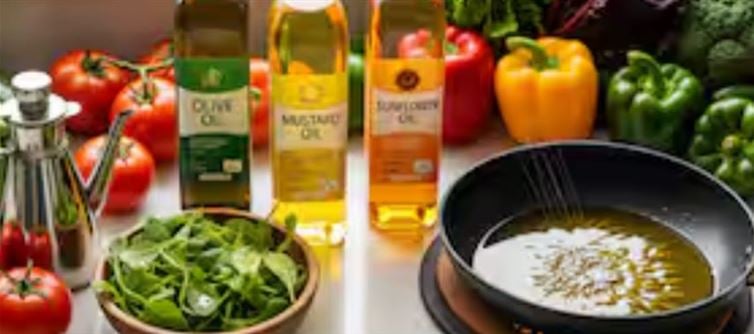
Why Cooking oil Matters
In India, cooking oil preference is cultural and traditional.
With rising cardiovascular diseases, choosing the right oil is crucial.
Olive, mustard, and sunflower oils are most used; each offers unique benefits.
Olive Oil: The Mediterranean Star
Key component of the Mediterranean diet.
Rich in monounsaturated fats and polyphenols (antioxidants).
Benefits:
Lowers LDL (“bad cholesterol”).
Maintains or increases HDL (“good cholesterol”).
Anti-inflammatory, protecting against artery hardening.
Best Use: Uncooked—salads, marinades, and drizzling.
Limitations:
Low smoke point (not ideal for deep frying).
More expensive, limiting daily use in indian homes.
Mustard Oil: India’s Ancient Superfood
Traditionally used in Eastern & Northern India.
Rich in monounsaturated fats and alpha-linolenic acid (ALA), an omega-3 fatty acid.
Benefits:
Reduces triglycerides, blood clots, and arrhythmia risk.
Balanced omega-3 to omega-6 ratio.
Contains antimicrobial & anti-inflammatory compounds.
Best Use: High smoke point makes it great for frying, sautéing, and curries.
Distinct flavor enhances indian cuisine.
Sunflower Oil: The All-Rounder
Widely used due to its light texture and neutral flavor.
High in vitamin E and polyunsaturated fats.
Benefits: Lowers cholesterol when consumed moderately.
Limitation: High omega-6 levels can promote inflammation if overused.
Which oil Is Best
No single oil is “best”; each has strengths.
Smart Strategy:
Olive oil → salads & continental dishes.
Mustard oil → curries & stir-fries.
Sunflower oil → occasional frying.
Key Rule: Moderation is essential; oils are calorie-dense.
Pair with a balanced diet, fruits, veggies, whole grains, and regular exercise.




 click and follow Indiaherald WhatsApp channel
click and follow Indiaherald WhatsApp channel